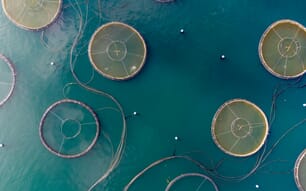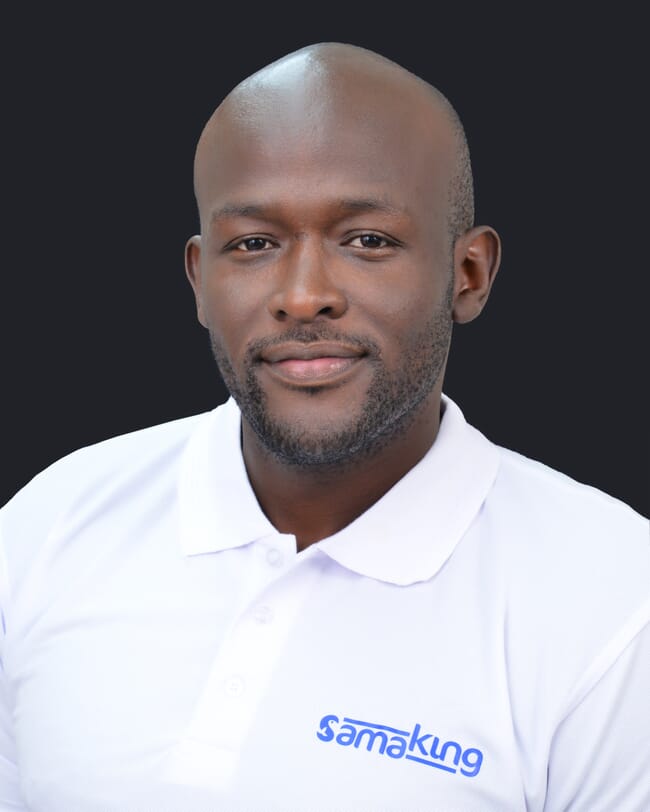
© Samaking
The company recorded a twelvefold revenue increase over the first seven months of the year and founder Clinton Obura believes building resilient cold chains and using digital tools are key to unlocking East Africa’s blue food economy.
Can you share a bit about your background and what inspired you to launch Samaking?
I studied computer science, thinking I would become a software engineer, but as I neared graduation, I realised I was more drawn to marketing and growth within tech. After graduating, I joined a management training programme at Google and later worked in Dublin. I eventually returned to Kenya, driven by the desire to build something at home. I joined Uber Eats as they were launching in Nairobi and helped scale it to over 14,000 orders a week.
I later joined Elephant Healthcare, where I launched operations in Ghana, Kenya and Uganda and supported work in Nigeria and Pakistan. After two years, I realised I wanted to build something of my own. While consulting for an investment firm, I did due diligence on a fish farm. That is how I discovered the fish value chain. It was vast and fragmented. I kept researching, refined the idea, and pitched it to Delta40. They believed in the vision and wrote the first cheque. That was the start of Samaking.
What problem are you solving and how does your business model work?
Kenya faces a huge gap between the fish its people need and what the country produces, estimated at more than 300,000 tonnes each year. On average, Kenyans eat 4.7 kilograms of fish per person, compared to 10 kilograms in Africa and 20 kilograms globally. Wild-catch fisheries are overfished and becoming unsustainable, while fish farming is still too expensive for most local communities.
Across the value chain, four main problems hold the sector back. Farmers have low yields due to poor farm management and limited access to quality inputs like feed and fingerlings. Weak cold-chain systems cause high levels of spoilage before fish reach the market. Many producers cannot rely on consistent buyers, leading to unpredictable income. Lastly, poor distribution makes it difficult for consumers in towns and cities to access affordable fish.
Samaking is solving these challenges by building an inclusive, cold-chain-enabled fish supply network that connects farmers and fisherfolk directly to reliable markets. We focus on two key areas. First, we help farmers become more productive by providing better inputs, financing, insurance, and practical training. Second, we improve market access by aggregating and distributing fish through refrigerated hubs to both B2B buyers and informal women fish traders known as Mama Samakis.
Mama Samakis play a central role in Kenya’s fish economy, selling over 84 percent of fish in urban and peri-urban markets. We are developing solutions that help them grow their businesses sustainably. In one pilot, we partnered with Kapa Oil to install cooking-oil ATMs in our shops, allowing women to refill oil at a lower cost while reducing plastic waste. We are also testing inventory credit to replace expensive daily loans and improve cash flow for traders.
Our mission is to make fish the number one protein on African plates while improving livelihoods across the entire value chain.
Who are your main customers today, and how has the response been from farmers and the market?
We work across the entire fish value chain, serving both producers and buyers. On the supply side, our core users are cage fish farmers around Lake Victoria. We partner with a mix of large, medium, and small farms. Large farms provide stable volumes, while smaller farms help fill supply gaps and improve consistency.
Fish farming is capital intensive, with a production cycle of six to 12 months and no income during that period. Inputs such as feed and fingerlings are expensive and must be paid for upfront. That is why we began by solving the market access problem. Once farmers know their fish will be bought, they gain the confidence to expand production.
On the buyer side, we serve several customer segments. One of them is fish processors, who require large and regular volumes but often operate on payment terms. We bridge this gap by paying farmers upfront and offering flexible payment options to processors. Our largest customer group is informal fish traders, especially Mama Samakis, who dominate retail fish sales in Kenya’s urban and peri-urban markets.
The response from both farmers and buyers has been very positive. Farmers value the reliability of our market and faster payments, while buyers appreciate the consistent supply, quality assurance, and cold-chain logistics that reduce spoilage and improve their margins.
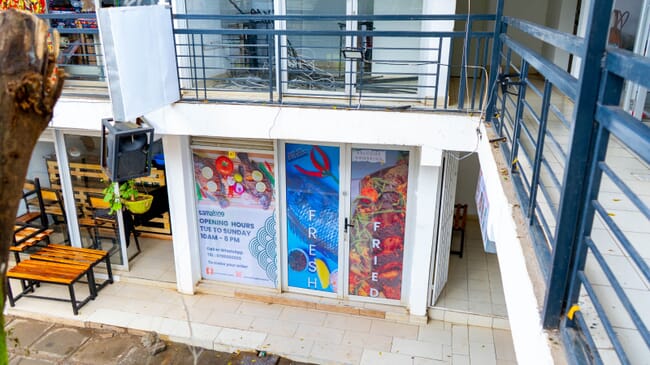
© Samaking
What have been your major milestones to date?
One of the first milestones was launching a direct-to-retail model. That gave us critical insight into the end consumer. Even though we now run a B2B model, someone still eats the fish at the end. If you do not understand that person, the rest of the value chain falls apart. Starting with retail helped us build that empathy and understanding.
We later expanded into wholesale, processors, and general trade through Mama Samakis. This diversification made our operations more resilient. A major turning point was sourcing fish directly from farmers. That sounds simple, but it is not. You need a cold truck, ground teams to assess quality, and enough volume to justify the cost of each trip. Our trucks carry 3 tonnes and must be filled each trip. In a strong month, we now aggregate 200 – 300 tonnes of fish. We are working toward scaling that to 1,000 tonnes.
In 2025, we were awarded the Productive Use of Energy grant from PREO, funded by IKEA Foundation and FCDO. This will fund two [fish] aggregation centers in Homa Bay and Usenge, and a new distribution hub in Nairobi.
Our revenue has grown 12x since late 2024. We aim to cross $100,000 in monthly revenue by year end and prepare for our seed round in early 2026.
What challenges did you face when building Samaking, and how did you overcome them?
The biggest challenge was resourcing, especially financing. People often assume that raising $500,000 means you are in a good place. What they do not see is that the money came in bits - maybe $25,000 at a time, then $50,000 a few months later. So what looks like half a million is often a stop-start journey. You do a little, then pause. You move forward, then wait again. That cycle makes it hard to plan or grow consistently.
Most African founders are forced to choose between saving money and growing quickly. Startups are told to scale fast, but it is nearly impossible when you never have more than three months of cash in the bank.
Another challenge has been the natural mistakes that come with building something from scratch, which means errors will happen, and those errors cost money. But if you are not making mistakes, you are not learning.
Then there is the people side. We have a young team, many in their first jobs. We have never had more than six months of runway. That can make people nervous but we try to be honest with them about exactly where things stand so they can make informed decisions.
Are there some challenges that you're still working to solve today?
Yes, several. One of the biggest is achieving consistent scale. For our margins and supply chain to stabilise, we need to move large volumes of fish every week. A five-tonne truck can hold product of around $13,000 - $14,000 in value. Our target is ten trucks weekly, which means over $130,000 tied up, so working capital is a major constraint. With payment terms, that grows to nearly $400,000 in working capital.
Fundraising is also difficult. The global economy is tight and capital is harder to raise. Even strong startups are shutting down. We are pushing through, but it is tough.
The third challenge is people. As we move from pre seed to seed stage, I constantly reflect on whether I have the right team.
How have you funded the business so far? And are you currently seeking investments or any form of partnerships?
We have funded Samaking through a combination of equity and grants. So far, we have raised just over $300,000 in equity. As an early stage company in agriculture with a strong social impact focus, we have been intentional about matching the right type of capital to the right stage of growth.
Right now, we are not raising equity. Our B2B sales are growing steadily, so we are focused on raising working capital. We are currently seeking $10,000 - $200,000 to unlock key short-term needs, and we plan to open a larger seed round in early 2026. The original target for that round was $1 million - $1.5 million, to unlock $3.6 million in revenue in 2026
We are also exploring partnerships across the value chain, including county governments for facility leases, feed supply integration and inventory financing for Mama Samakis to help them grow sustainably.
Are you using or developing any additional technologies?
Yes, across our value chain, we have built some tools and learned from others. On the farmer side, one of the biggest gaps in aquaculture is access to basic data. So we developed a custom app for our field teams. It helps them map farmers, track visits, and schedule harvests. If a farmer plans to harvest in September, our team can assess fish size and check if the timing is realistic. It may sound simple, but this kind of baseline data is critical. It also allows us to track farmer progress – for example, if someone has been with us for three years, if their income has improved.
On the customer side, we use a similar tool. It helps us analyse customer clusters and plan better. For example, we discovered a large number of traders concentrated in one part of Kawangware. With this data, we can have informed conversations with partners. When Zanifu wanted to explore inventory financing, we could clearly show that we serve over 700 traders from one outlet alone, and that number could grow to 2,000. We are a tech-enabled business, not a tech company. We build tools to strengthen operations, not to sell.
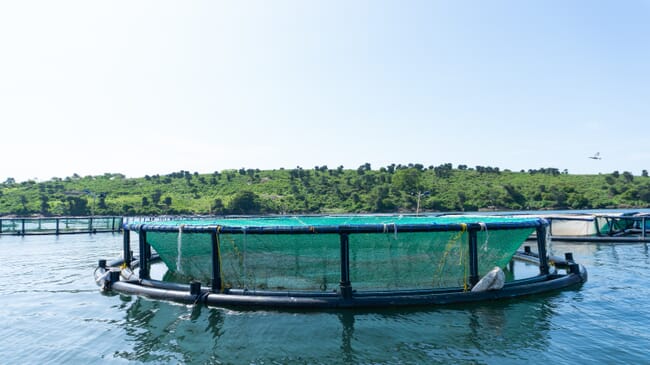
Have there been any individuals, organisations or partners in the aquaculture or startup space who have supported or inspired your journey?
We have been fortunate to work with partners who supported us in different ways. Delta40 Venture Studio was our earliest investor. They took the first risk and continue to back us two years later with weekly check-ins. We also raised from Kaleo VC and a few angel investors.
Gatsby Africa provided technical assistance and catalytic grants that helped us test ideas before scaling. TECA by BFA Global offered both technical support and funding, while, GIZ, through the SAIS programme, has also been a strong partner.
Elevate Blue, run by MTI Investment and Sote Hub, is the first programme we joined that focuses purely on the blue economy. That alone made it a better fit than many others, which usually mix startups from unrelated sectors. Elevate Blue is very focused. It brings together companies working in two core themes: blue economy and the circular economy. That clear structure aligned directly with what we are building at Samaking.
We are now part of MTI’s Growth Portfolio, which supports businesses on a strong growth trajectory. What is also powerful is the programme’s presence in both Kenya and Tanzania. That regional focus matters to us. Tanzania is one of the markets we are actively exploring for expansion, and MTI has a strong team there. They really understand the landscape, which gives us valuable insights and local grounding as we grow across East Africa.
We also received interns through the Mastercard Scholars Program and support from the Mastercard YISA initiative. Those early team members helped us get off the ground. This year we received approval for ten more interns.
We were also awarded the PREO grant, funded by IKEA and FCDO, to build cold chain infrastructure along Lake Victoria. We are open to more aligned partners as we grow.
Looking ahead, what is your vision for Samaking in terms of scale, market reach and overall impact?
In five to ten years, I probably will not be the CEO. Ideally, someone with more energy and sharper skills will take the lead. That is the dream – to build something that goes beyond the founder.
By then, I see Samaking operating in at least five African countries. Tanzania and Uganda are top priorities. Kinshasa in DRC also looks promising. We are already laying the foundation for regional growth.
We are also seeing growing demand to expand our cold chain logistics. If you can move fish properly, you can move almost anything. Fish is one of the most delicate products. Food companies are now approaching us to distribute frozen goods in Nyanza and western Kenya. That tells us we are on the right path.
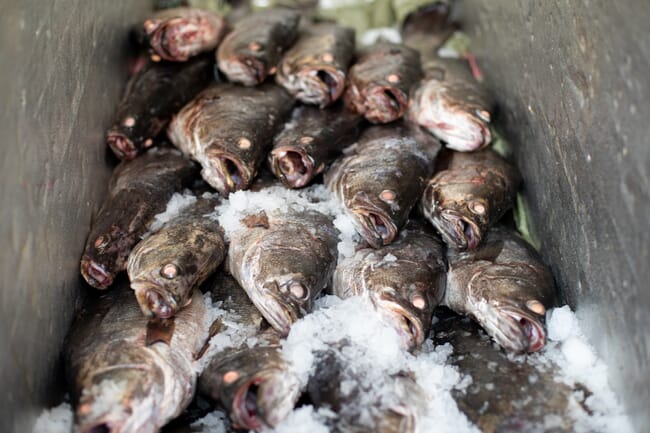
© Samaking




